Key in a search term below to search our website.
Key in a search term below to search our website.
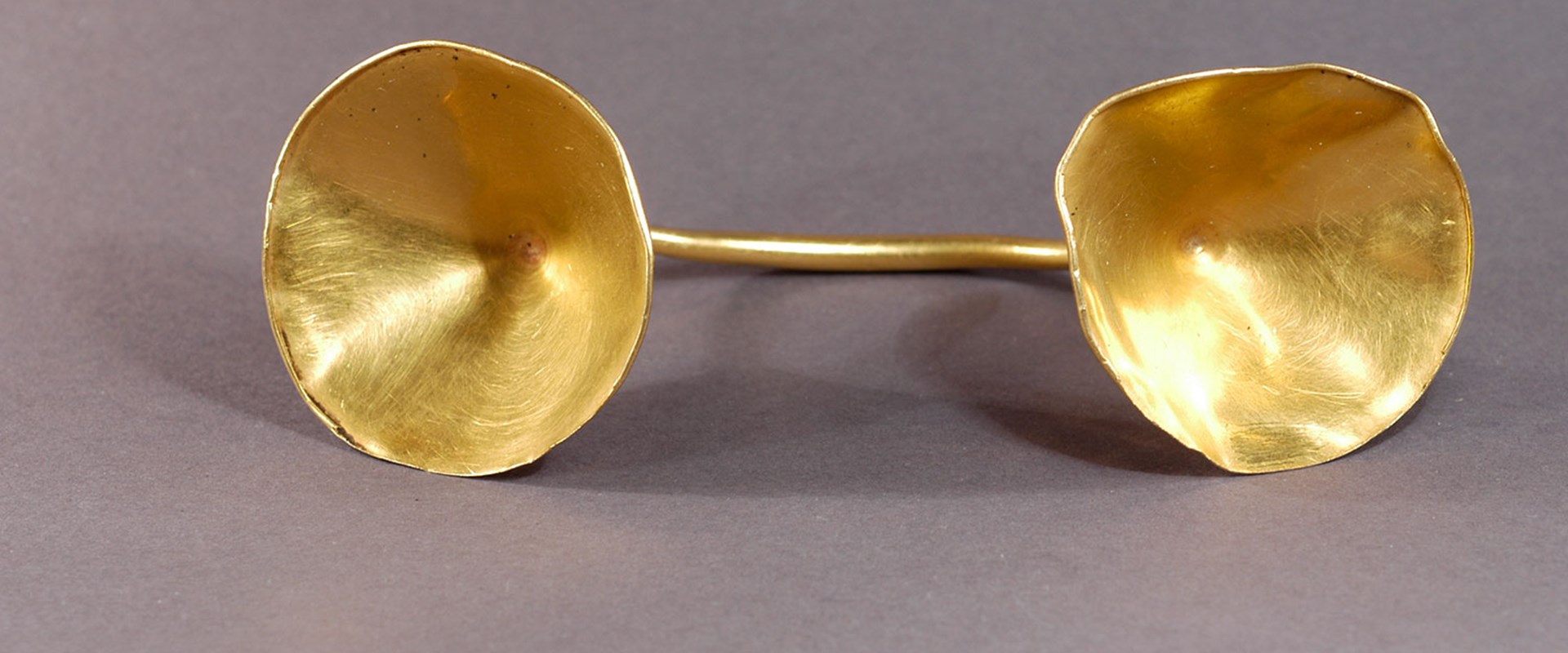
This week’s object of the week is a gold ornament found on the Isle of Skye. These objects are often referred to as ‘cup-ended ornaments’, because of their large concave circular terminals, or ‘dress fasteners’, though we’re not sure exactly how they were worn. They could possibly have been worn on the arm, although their wide arc suggests that they are more likely to have been used to fasten a garment such as a cloak.
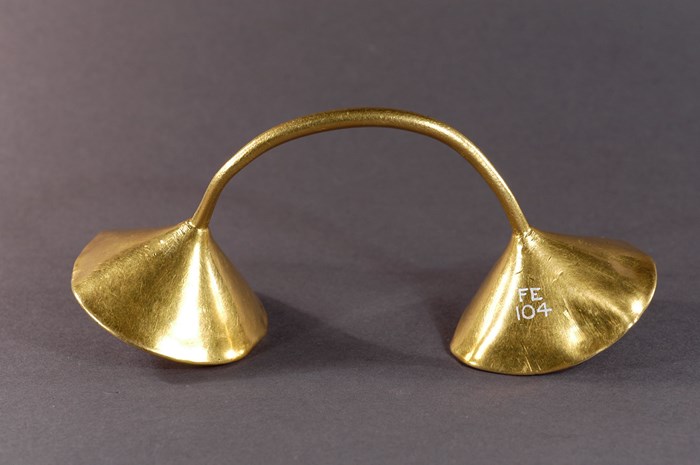
The Skye cup-ended ornament. Photo by B Armbruster.
To make this object, the thin ‘cups’ of gold must have been soldered or cast onto the narrow curved gold bar. It required a skilled craftsperson and certainly would have been striking however it was worn. This form of object was (almost!) always made out of gold and dates to the Late Bronze Age, around 1000–800 BC.
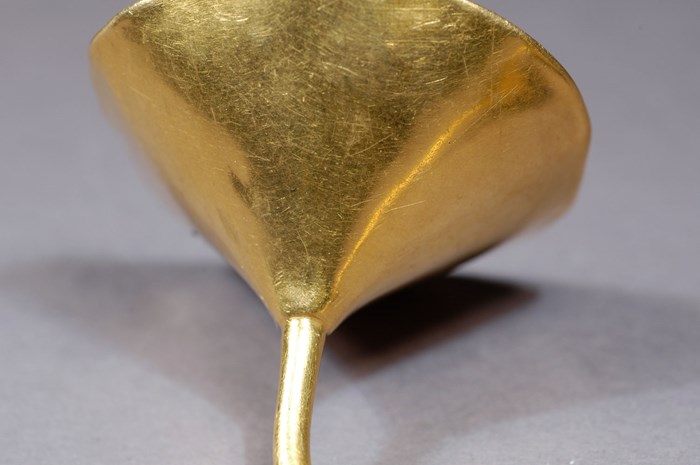
Detail of the junction between the hoop and one of the cups. Photo by B Armbruster.
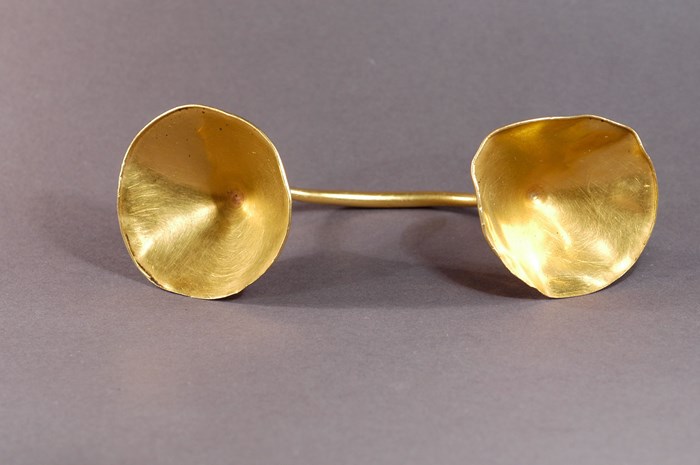
Front view showing the cups. Photo by B Armbruster.
The Skye ornament weighs about 74g and is 136mm wide. The cups are approximately 50mm in diameter each, though one is slightly deformed due to the thinness of the gold. The inner rims of the cups have incomplete, irregular flanges. Could this mean that this ornament was unfinished when it was deposited? Or not as carefully finished as other similar ornaments? Or had the flanges been partly worn away? We don’t know.
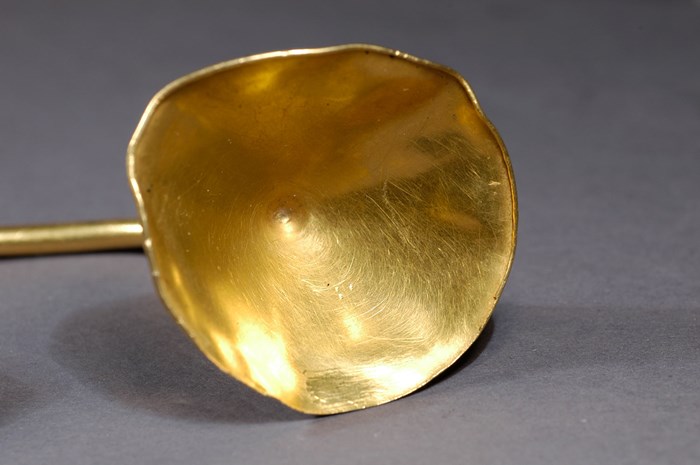
Detail of one of the cups. The incompleteness of the flange around the edge of the cup can be seen. The scratches towards the bottom of the photo show where it had been sampled for analysis. Photo by B Armbruster.
The Skye ornament was found some time during the 1970s while fencing was being constructed. The terminals were together when found and pulled apart with the finder thinking it was the top of an alarm clock! It took nearly a decade for the finder to recognise that it was prehistoric gold and to report it as Treasure Trove. As a result, even though we know it was found on the northern part of the Isle of Skye, but can’t be more precise. It now resides within our collections here at National Museums Scotland.
Knowing that it was found on Skye is valuable information. Gold cup-ended ornaments are most commonly found throughout Ireland, with a wide distribution, and it is likely that the design and technology for making these objects originated there. In Scotland they are less common, but have a largely western distribution, mainly on islands or near coastlines and river valleys – that is, places which could easily be reached from Ireland, across the sea. We know that there were strong links between Scotland and Ireland during the Bronze Age.
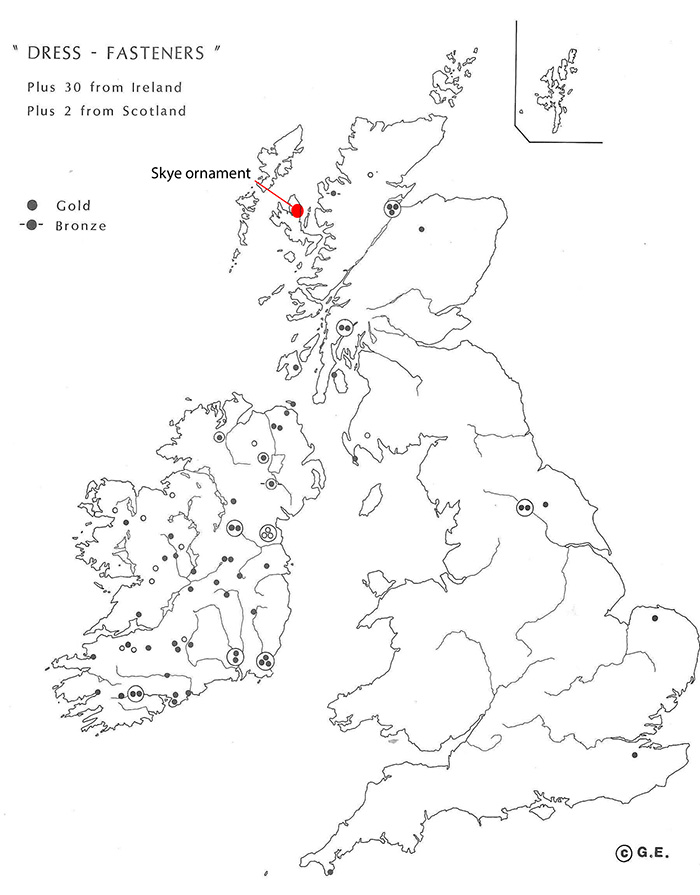
The distribution of ‘dress fasteners’ in Britain and Ireland (adapted from Eogan 1994, ‘The Accomplished Art’, Figure 40).
A notable exception to this predominantly west Scottish distribution is the hoard of four cup-ended ornaments and five gold bracelets (plus a cuff ornament, not shown in the photo below) found at Heights of Brae in north-east Scotland; this will feature in a later blog! This findspot lies near the north-east end of the Great Glen, which seems to have been a major route of travel between Ireland and Scotland throughout the Bronze Age, and during earlier and later periods.
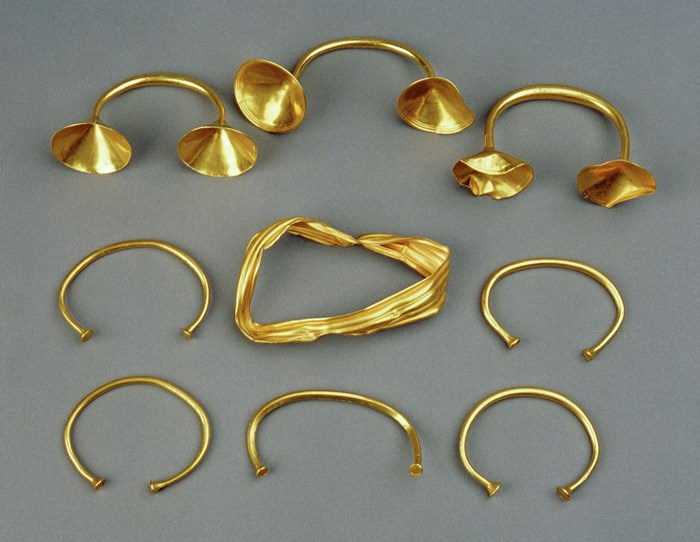
The Heights of Brae hoard. Photo by B Armbruster.
Of course, while we can see these links with Ireland, it is unclear whether the Skye ornament was made in Ireland and exported to Skye, or whether it was made in Skye, using imported gold, and imitating Irish examples. If it is unfinished, then perhaps it was made by a travelling goldsmith. Only one other Bronze Age gold object is known from Skye at present – a small hair ring, like the one from Cladh Hallan. Gold objects were probably extremely rare on Bronze Age Skye, suggesting that the owner of this precious object must have been an important person, perhaps a community leader. The cup-ended ornament would certainly have displayed this importance in an ostentatious way.
 By Matthew Knight, Curator of Chalcolithic and Bronze Age Prehistory
By Matthew Knight, Curator of Chalcolithic and Bronze Age Prehistory